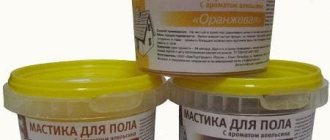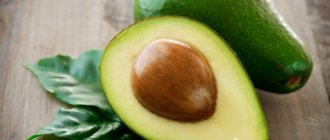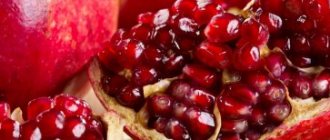Modeling paste can take any shape, you can use it to make a cake in the shape of a car or decorate a large wedding cake with flowers. This paste can decorate any product and, if you use your imagination, it can please your loved ones.
Sugar paste for cakes or other culinary products consists largely of sugar syrup and gelatin. For better taste and color, various dyes and flavors are added to the essence. Such a sweet paste is now one of the easiest and simplest ways to decorate a cake and sculpt figures on it, since the material is very plastic. We will tell you further about how to store mastic figures, how long you can store mastic and how to store a cake at home.
Jewelry made from mastic is a win-win option
Any cake can be covered with sweet mastic; this will help maintain the moist texture of the cakes, the freshness of the cream and easily eliminate all the unevenness of the cake. You can make decor from the same mastic by adding a little multi-colored dyes. Cakes are a huge success at various celebrations - children's birthdays, weddings and anniversaries; you can create a unique decor on the cake that guests will remember.
- The easiest way to make a sugar mixture is to combine powdered sugar, water and marshmallows. Often, honey or honey sweetener is added to improve the taste and give an interesting taste. The mass acquires a beautiful shade and becomes smoother, the surface of the cake becomes shiny and glossy. Most people do not know how to prepare mastic and buy ready-made ones. But doing it with your own hands is not very difficult even if you are not a professional.
- At home, you can use marshmallows, which, when melted, make it possible to distribute the mass over the surface of the cake. The main thing to remember is that the main thing is to show imagination when working with the sweet mass, to use additional decor and fruit.
How to make mastic for a cake
1. SUGAR MASTIC
20 g gelatin 9 tbsp. l. cold water juice of 0.5 lemon powdered sugar (as much as needed to obtain an elastic mass)
Rinse the gelatin and soak in cold water for 2-3 hours (it should swell). Then heat it to 55 degrees until it melts. Strain the hot melted gelatin, then cool to 25-30 degrees and combine with sifted powdered sugar, stirring constantly until a homogeneous mass is obtained. It should be elastic, not stick to your hands and not crumble. After this, add lemon juice.
2. Marshmallow mastic
per 1000 g: 470 g granulated sugar, 12.5 g gelatin, 2 egg whites, 1 g citric acid, 150 g water, 500 g powdered sugar. Soak the gelatin in cold water. Beat the egg whites until the volume increases 5 times. Make syrup from sugar and water. Add swollen gelatin, citric acid to the finished syrup and mix everything. Pour into beaten egg whites. Then add powdered sugar and stir. This mastic has a delicate structure; it should be stored in a container covered with a damp cloth.
3. SUGAR-GELATIN MASTIC
1 kg. powdered sugar 1.5 tbsp. l. gelatin 0.25 cups water
Gelatin is soaked in water (1:2) for 1 hour, put on low heat and heated with stirring until completely dissolved (I diluted it as indicated on the package). Then the mixture is filtered (if necessary?), powdered sugar is added and stirred. . This mastic dries VERY quickly. It’s more likely not mastic, but pastillage.”
4. MASTIC FOR COATING
powdered sugar 500 g gelatin 12 g cold water 35 g corn syrup 80 g (or any other without color) protein 1 piece coconut fat a little (1-2 teaspoons) lemon juice 1 teaspoon
1. sift the sugar powder 2. pour COLD WATER into a separate bowl, pour in the gelatin and mix until pureed 3. place the cup with gelatin in a steam bath, add a little coconut fat, stir constantly until the gelatin melts 4. add syrup and also constantly stir until it “melts”, the syrup should “mix” well with the gelatin 5. add the mixture with gelatin to the powder, mix a little and add the protein 6. knead until smooth (so that it doesn’t stick to your hands, grease your hands well with coconut fat) Place in a container or bag. leave for a day. Do not add powdered sugar, even if the mastic seems soft when kneading.
5. CHOCOLATE MASTIC
100 g dark chocolate 90 g marshmallows (color does not matter) 40 ml cream (30 1/2-1 tbsp butter 90-120 g powdered sugar 1-2 tbsp cognac
Method of preparation First, make the mastic: Place the chocolate broken into pieces into a saucepan and place on low heat. Melt completely. Without removing the saucepan from the heat, add marshmallows to the melted chocolate and constantly mix the mixture well with a spoon. When about half of the marshmallows have melted, pour in the cream, add butter and cognac. Stir continuously until a homogeneous thick liquid mass is obtained. Remove from heat. Constantly stirring with a spoon, gradually add sifted powdered sugar. When the mass turns out to be too thick and elastic and it is no longer convenient to stir with a spoon, do it with your hands. Add powdered sugar until the mixture feels like warm, tight, elastic dough. It does not stick to your hands at all - on the contrary - your hands remain clean, but greasy. Roll the mixture into a ball and place on baking paper. Cover with another sheet of paper on top. And roll out to the desired thickness. Remove the top sheet of paper. The mastic is ready. It turns out barely warm, very soft and tender. You can store it tightly closed in the refrigerator, and warm it up slightly in a micro before the next use.
6. CHOCOLATE-MARSHMALL MASTIC
150 gr. sah. powder 200 gr. bitter chocolate 180 gr. marshmallows (any color) 1 tbsp. l. butter or margarine or vegetable fat 3 tbsp. l. cream 1 tbsp. l. liqueur or orange juice (optional)
1. Melt the chocolate in a bathhouse. 2. Add marshmallows, mix with chocolate and continue melting. 3. Add cream and margarine. Interfere. 4. In a mixer (guitar attachment, that is, a dough attachment), prepare the sugar. powder and add liquid mixture. 5. Stir until the dough is homogeneous. The mastic is ready. Transfer to a bag and chill for a day. Then take it out, let it warm up and knead again. It is better to roll out on film. 6. Store in the same way as other mastics. With white chocolate: instead of cream I used milk and 1 tsp butter. Then you can mix it with marzipan, regular mastic, or gelatin.
7. SUGAR PASTE
Ingredients: powdered sugar 200 g vegetable margarine 50 g honey 1 tbsp. spoon food paint
Sift the powdered sugar and mix it with margarine and honey. Add coloring (optional). Roll the prepared mixture into a ball. If necessary, add more powdered sugar. Balls, flowers, etc. are made from this paste (you can use molds). If you are not going to use the paste right away, put it in the freezer and keep it there until needed.
8. GELATIN MASTIC
The recipe is very simple from freely available products, without any CMC and glycerols: Gelatin -12 gr. water - 50 ml egg white - 1 pc lemon juice - 1 tsp sugar powder - 1 kg cards starch - 100 g.
Add starch to the powder, then egg yolk. Soak the gelatin, add lemon juice, heat until it dissolves, pour into powder, water and knead into an elastic dough, let rest in the refrigerator.
9. How to make marshmallows at home
450g. sugar 15ml. glucose 8 drops van. aromas 25g. gelatin powder 2 egg whites 3-4 tbsp. l. starch 3-4 tbsp. l. sah. powders oil for mold
-Sugar, glucose and 200 ml. Heat the water and stir until the sugar melts. Cook with the lid closed for about 3 minutes. Add van. aromas. -Pour 100 ml gelatin into a metal bowl. water, melt in a water bath. -Whip the whites to peaks. -Pour the syrup into the whites in a thin stream, while stirring. Also gelatin. Beat for 10 minutes. until the mass is stable. -Mix starch and powder in a deep cup (will be needed later) -Grease a square mold with butter and sprinkle with the mixture (starch powder) -Pour marshmallow cream into the mold, level it and put in the refrigerator for 4 hours. -sprinkle the table with the mixture, place marshmallows on the table. You can squeeze it into a round shape or cut it into 3 by 3 cm squares. -Put squeezed or cut marshmallows into the bowl with the mixture and mix everything well so that they don’t stick to each other. -You can melt the chocolate and dip half of the prepared marshmallows into the chocolate and cool.
10. Marshmallow candy recipe
500 gr. sugar 350 ml. water 1 c. spoon of glucose 30 gr. gelatin 2 egg whites powdered sugar starch.
pour 200 ml. Bring sugar and glucose to a boil. Dissolve gelatin in the remaining water. and begin to beat the whites (turning the bowl over does not fall). mix the gelatin with the syrup and stir vigorously and pour in the egg whites without stopping (the mass will become thick). Cover the mold with parchment or sprinkle with powdered sugar mixed with starch in equal parts. put everything into a syringe and squeeze out balls or spread in an even layer
11. SUGAR MASTIC with molasses.
You will need: gelatin - 10 g, water - 150 g, powdered sugar - 930 g, molasses - 50 g, fruit essence - 0.5 g. You should get about a kilogram of mastic. The gelatin is washed by filling it with cold water, then the water is drained, and the gelatin is again filled with water (its temperature should not exceed 20-25 degrees C). Allow it to swell (about 2 hours), put it on low heat and heat until it is completely dissolved. The sifted powdered sugar is poured in a heap on a wooden or marble table (the aluminum makes the powder darker), a hole is made in it, into which molasses, dissolved gelatin and fruit essence are poured. Mix quickly to obtain a homogeneous white or slightly grayish mass. It is from this disgrace that they recommend making flowers.
12. MASTIC ON GELATIN
Required: 2 tbsp. l. cold water, 1.5 tsp. gelatin, 1.5 tbsp. l. liquid glucose, 2 tsp. glycerin, 450 grams of powdered sugar. Pour gelatin with water and let it swell. Then heat the gelatin on the stove until it dissolves, but DO NOT boil, add glucose and glycerin. Stir and gradually add sifted powdered sugar, knead the mastic first in a bowl, then on the table. Mastic from “Bird's Milk” candies Cut the frozen “Bird's Milk” candies into 2 by 2 squares, roll them in powdered sugar. Heat in the microwave, add powdered sugar and knead into a thick mastic. It is better to sculpt if it sits for 2-3 hours. Keeps for a long time. If it becomes too harsh, warm it up in the microwave for about 10 seconds. and you can sculpt further.
13. SUGAR-STARCH MASTIC
800 g sugar powder, 200 grams of corn starch, citric acid on the tip of a teaspoon, 1 glass of water. Dissolve a pinch of citric acid in a glass of water and bring to a boil. In 4 tbsp. l. cold water dissolve the starch and brew it in boiling water with acid. Add powdered sugar in small portions and stir until a homogeneous plasticine-like mass is obtained. At the end, dye is added. Elastic sugar mastic (for 1200 g of finished mastic) Water 80 ml Gelatin 7 g Glucose (sold in pharmacies) - 2 tbsp. spoons Soft margarine - 1 tbsp. spoon Powdered sugar 1 kg
Pour gelatin with water and leave for 40 minutes to swell. Heat the gelatin in a water bath; when dissolved, add margarine and glucose to the gelatin. Mix everything well. Pour into another container and leave to cool. Add a little powdered sugar to the cooled mass, start mixing, and continue adding powdered sugar little by little. When the mixture becomes thick enough to knead. Place on cutting table. First, pour a mound of powdered sugar on the cutting table, make a depression in the center of the mound, into which you place the mastic. Knead the mastic in the powdered sugar until it reaches an elastic consistency. You can prepare elastic sugar mastic in advance; it is well preserved in hermetically sealed plastic bags.
14. SUGAR-CUSTOM MASTIC
Ingredients: molasses 83 g corn starch 101 g powdered sugar 775 g water 202 g
The molasses and water are brought to a boil and, stirring, add the starch so that there are no lumps. Then add powdered sugar and knead until smooth, resembling plasticine. Brewed sugar mastic is more plastic; decorations made from this mastic are first dried and then used for decoration.
15. RECIPE FOR MASTIC FROM MARSHMALLOWS
marshmallows - 100 g - butter - 1 tbsp. l. -powdered sugar - 200-300 g -food coloring
Place the marshmallows in the mold, add butter. Microwave for 15-20 seconds. The mass should increase in volume. Place on the table, add dye, mix. Then add 100 g of powdered sugar and mix. Add powdered sugar until you get a mass similar in consistency to plasticine. Knead the mixture until it becomes sticky from your hands. Place the prepared mixture in the refrigerator for a couple of hours. Remove from the refrigerator and knead again to room temperature. When working with mastic, sprinkle the table and hands with starch.
16. HONEY MASTIC.
Ingredients for honey mastic
For 500 grams of powdered sugar 2 tbsp. spoons of honey 10 grams of gelatin 2 tbsp. spoons of vegetable margarine or creamy spread 6 tbsp. spoons of water Preparation As is customary when working with gelatin: soak the gelatin in water for 30-40 minutes. When the gelatin swells well, heat it in a water bath until dissolved and cool.
In a cup, stir honey, melted margarine or spread and cooled dissolved gelatin.
Start adding powdered sugar to the mixture little by little, stirring gently with a wooden spatula or spatula. When the mass becomes thick enough to knead, place it on a table sprinkled with powdered sugar and knead into an elastic dough.
Honey mastic for the cake should be elastic, so that it can be easily rolled out. If the honey mastic turns out soft, it will be impossible to work with it; it will stretch and tear greatly when covering the cake. Therefore, if your mastic is too soft, mix powdered sugar into the mastic to make the mastic stiffer.
I hope that you can choose from the proposed recipes for cake mastic that is suitable for yourself.
Shelf life of figurines
Due to its plasticity, mastic is used to make figurines for decoration. Cakes are decorated with figures, since under the influence of temperature they do not spread and do not lose their shape.
- Properly packaged figurines can be left in the refrigerator for several months and they will be suitable for consumption. If you leave them in a container or box, the figures will dry out and can only be used for decoration.
- Before placing decorations on the cake, they need to be dried at room temperature for up to 8 hours, and then in the refrigerator for several hours, and only then placed on the cake. The figures will have a dense texture, soft on the inside and slightly dense on the outside. The mastic should not spread and should not dry out too much.
- When placing the figures on the cake, you should make sure that the air humidity in the room is not high. If you feel that the temperature is not suitable, it is better to install the molds before taking out the cake, so that the figures will retain their original appearance.
- Any shapes or decorations made from sugar paste should be topped with icing, chocolate or cream. First place the cake in the refrigerator for several hours. You can increase the shelf life of mastic and figurines made from it by placing and carefully packaging it in cling film. This method will preserve the product and will be ready for use.
To secure the figures, you should use egg white; it sticks well and connects the joints of the cake well.
The mastic must be rolled out well, avoiding the formation of bubbles and folds. The finished mastic must be carefully distributed onto the product. If unevenness occurs, they must be removed immediately, and if bubbles appear, do not worry, they can be pierced with a needle and smoothed out. In pastry shops you can buy the necessary tools: spatulas, knives, wheels, with which you can easily cover the cake with decor.
How and where to store the product at home
To preserve mastic, regardless of whether you bought it or made it at home, you need:
- Pack the product in a container with an airtight lid and put it in the refrigerator; this way it will keep for 2 weeks.
- After consumption, combine the pieces, shape them into a ball or oval, wrap tightly in film, then in a plastic bag and put them on the bottom shelf of the refrigerator; they need to be used within a week.
- Keep away from vegetables and open containers with liquids.
- When you need to use the mastic again, remove it from the refrigerator in advance and keep it at room temperature for 10-12 hours to soften; then mix thoroughly, this will restore its elasticity.
- The product can be stored at room temperature in an airtight container for 3-4 days.
To make the mastic on the cake shine, it is greased with a solution of honey in vodka in a 1:1 ratio.
After finding out how long mastic can be stored in the refrigerator, you need to understand whether it can be frozen. Experts assure that confectionery paste can be stored in the freezer for 2-3 months. How to do it:
- Divide the lump into small portions.
- Wrap tightly in plastic wrap, plastic bag, foil, parchment, or place in a container with an airtight lid.
- Place in the freezer.
To proceed, defrost gradually: first place on the refrigerator shelf overnight, then leave at room temperature until warm. Knead well before use.
Note to the hostess
To speed up heating, you can place the mastic mass in the microwave or hot oven for a few minutes. Just make sure it doesn't start to melt.
Types of mastics
There are many types of mastics, and each has its own characteristics.
- Sugar. It is based on powdered sugar and gelatin. A mass that is difficult to mix and achieve the correct consistency, but of all types it is the most resistant to moisture.
- Marshmallow based mastic. How long do flowers made from mastic last and what is the shelf life of mastic-covered flowers in the refrigerator? No more than a week, while marshmallow mastic can last for several months in the freezer.
- Floral. Suitable for small parts and decorations, holds its shape well. It uses stabilizers and dyes. How long is it stored? Thanks to stabilizers, the cake coating lasts longer - a month to a month and a half.
- Mexican or modeling. I always keep the recipe on hand. Ready-made mastic is short-lived - the figures are prepared in the morning and this cake mastic can be stored for no more than 3 days. Ideal for covering wedding cakes that need to retain their shape.
How long can you store homemade mastic?
This paste contains only natural products and, of course, the shelf life of homemade pasta will be shorter than that of store-bought pasta. But it can be used to safely decorate desserts intended for children's parties and people who have allergic reactions to artificial additives.
Proper storage will allow homemade pasta to stay fresh longer. It is also important to let it sit in the refrigerator for 1 day immediately after preparing it.
The container with the paste is covered with a film with holes, so it will not absorb so much powder.
If the mastic turns out to be too liquid, you can thicken it without adding powdered sugar. Place it in a warm place for 2 hours so that excess moisture evaporates. It is advisable to consume such a product immediately and not store it for a long time.
You can store homemade mastic for up to 3 weeks.
Storage conditions
Cakes coated with sugar paste can be stored for no more than 2-3 days even in the refrigerator. If the cake is covered too heavily in cream, the fondant may bleed due to the moisture it has absorbed and spread. But in general, like any confectionery product, mastic should be used immediately after preparation.
- The surface covering the cake, which can be stored in the refrigerator, requires proper packaging. The mastic should be packaged in parchment paper or thick cling film (this will prevent the mass from gaining moisture, forming condensation, and deteriorating).
- If you are going to store sweet paste for a long time, you need to put it in the refrigerator, or better yet, in a separate container. It is best to store mastic products, of course, not in the freezer. And where to store, you ask... Ready-made figurines can simply be stored in the refrigerator for several days.
- It is better to cover the mastic in the refrigerator with cling film so that it does not weather.
It is important to pack marshmallow mastic correctly, because under the influence of air and humidity it can lose its properties, but storing sugar mastic is much easier!
How long can you store homemade mastic?
This paste contains only natural products and, of course, the shelf life of homemade pasta will be shorter than that of store-bought pasta. But it can be used to safely decorate desserts intended for children's parties and people who have allergic reactions to artificial additives.
Proper storage will allow homemade pasta to stay fresh longer. It is also important to let it sit in the refrigerator for 1 day immediately after preparing it.
The container with the paste is covered with a film with holes, so it will not absorb so much powder.
If the mastic turns out to be too liquid, you can thicken it without adding powdered sugar. Place it in a warm place for 2 hours so that excess moisture evaporates. It is advisable to consume such a product immediately and not store it for a long time.
You can store homemade mastic for up to 3 weeks.
Important Tips
- When choosing mastic sugar, you should buy finely ground powder for it. This will give the mass a better consistency, and it will be easier to roll out the paste until smooth;
- If, when kneading the mastic, it sticks to your hands, you should add powder, do it carefully so that the mass does not become too tight;
- Cover marshmallow mastics with food coloring; they are safe for the health of adults and children. But dyes can also be made at home from fruits and vegetables;
- Sugar mastic must be rolled out well. The thickness should be 2-3 mm. A coating that is too thick will dry out over time and may crack. And something that is too thin can easily tear;
- If the mastic is slightly dry, you can place it in the microwave and it will immediately become elastic and plastic. It is worth carefully monitoring the temperature so that the mass does not float. Is it possible to store it after heating - absolutely!
Remember that how to store mastic is not the main issue. The main thing is where to store it.
Sugar, caramel, almond - any mastic will decorate your culinary masterpiece. Mastic will smooth out all the unevenness, even out the edges of the cake and will be an excellent addition. If you follow the instructions, working with the sugar mass will become easy and enjoyable. When choosing ingredients for cooking, you should not take large quantities, but only high-quality products. At the market you can buy not only the ingredients, but also the decorative paste itself, additionally purchasing dyes and sweet toppings.
What is mastic and what types does it come in?
Confectionery mastic is used to cover cakes, make flowers and all kinds of figures. There are several types of material:
- for applying to the surface of baked goods - sugar;
- for making jewelry and floral elements - floral;
- for creating figures - Mexican.
Novice confectioners can purchase paste in specialized stores for use at home. Experienced craftsmen share numerous recipes for making the product.
Mastic can be prepared at home based on:
- milk;
- gelatin;
- chocolate;
- marshmallows, etc.
Dairy
To prepare the paste, you need condensed or powdered milk. For kneading, instead of flour, use sugar, crushed into powder. The result is a soft and plastic mass that is pleasant to the taste.
- It has a long drying time. This quality is indispensable when you need to cover a cake, make figures and flowers.
- Milk paste has a drawback: if you put a little less powder in it, then the layer on the cake will turn into porridge.
Note to the hostess
To prevent the situation from getting out of control, part of the powdered sugar is replaced with starch.
To prevent the coating from tearing, it should be rolled out no thinner than 2-3 mm, and the powdered sugar in its composition should be very finely ground without sugar grains
Gelatinous
The mastic contains gelatin and powdered sugar. It is suitable for creating large volumetric compositions, flowers, and shapes. The downside is that the paste dries quickly. This creates difficulties in the manufacture of thin and small elements, which break off when dry.
Do you know that…
Gelatin fondant is not suitable for covering a cake because it eventually becomes hard. Good results are achieved by using gelatin paste and marshmallows together.
Chocolate
The following is added to the chocolate variety for decoration:
- chocolate without fillers of any color;
- marshmallow;
- powdered sugar;
- butter.
Mastic is pleasant to work with because it is very plastic and dries well. It is used to make any decoration elements, and is also used to cover cakes. It's delicious on its own. White chocolate produces a creamy paste that can be colored in different colors with food coloring.
Tip of the day
While preparing the chocolate mastic, stir in the powdered sugar carefully. From excess, the mass crumbles.
From marshmallows
Marshmallows are candies in the form of marshmallows or marshmallows that came to us from America. From them, with the addition of powdered sugar, a soft plastic mastic is obtained, which is used to cover the surface of cakes and cut out decorative elements.
If you add more powder, you get a mass for sculpting figures. Colored candies make mastic of different colors.
It is not necessary to look for candies with the name “Marshmallows”, just the word “mallows” on the packaging
Results
Mastic is a great way to decorate a confectionery product so that its appearance will be remembered for a long time by everyone present. A photo can only capture the beauty of the cake, but the memory will preserve the wonderful taste of the dessert prepared with mastic for a long time. I would like to think that this article will help you understand how and how long you can store mastic and will help novice confectioners give a sweet holiday to adults and children.
Source
Sugar mastic is a plastic material from which experienced craftsmen create a variety of decorations for holiday baking. This type of decoration for confectionery products has been used relatively recently, but it has already gained popularity. Therefore, it’s time to figure out how to store mastic and cakes using it.
Delicate sweet roses
Mastic roses will always look appropriate on both a birthday cake and a wedding cake.
Necessary materials for work:
- blank for the core (mastic should dry in two days);
- rose cutter;
- tool with ball;
- soft sponge mat.
At the beginning of work, you need to roll out thin pancakes from sugar mastic. Attach the mold and cut out the quinquefoil blank. Draw a tool with a ball at the end along the edges to make the petals look more natural.
There is a special secret for how to fold the petals to make the rose look more realistic: be sure to fold the petals in the sequence 1, 3, 5, 2, 4 as in the photo. Use a soft mat to collect the flower around the center using a toothpick.
Let the workpiece dry for 10 minutes.
Then make the next layers of three petals, carefully cutting off the extra two. Start each new layer at the junction of the petals of the previous one.
Afterwards, dry the flower head down.
The tutorial for making an edible rose is ready!
Storing store-bought mastic
Nowadays, it is not difficult to buy all the semi-finished products for making confectionery products in the store. If you don’t have the time or desire to make mastic yourself, you can purchase it. But when buying ready-made sugar paste, you need to take into account that manufacturers add preservatives to it to increase shelf life. Also, such products contain a number of stabilizers and flavorings, which generally makes the paste unhealthy if consumed too often.
Storing industrially made mastic will not create problems if you follow certain rules.
- When removing the required amount of paste from the package, you need to reduce the contact of the entire mass with air to a minimum. Remove part of the paste only with a clean spatula.
- Do not expose the mastic to moisture or high temperatures. Excessive moisture makes it too liquid, and heat leads to drying out and loss of plasticity.
- Leftover pasta can be wrapped in foil or edible wax paper to prevent it from sticking to the package.
Mastic in an airtight container can be stored in the refrigerator for up to a month and will retain all its properties. Pieces in foil - only for a week.
Tools for working with mastic
To facilitate and simplify the process of sculpting decorations from mastic, special tools are used to work with this confectionery material:
If you want to do all the stages of preparing and decorating the cake yourself, then you can’t do without a mastic recipe.
Ingredients:
- 2 tsp. gelatin (or 200 g of white marshmallows);
- 500 g sugar (preferably powder);
- ¼ glass of water.
Preparation:
The marshmallow recipe does not use gelatin. The marshmallow thickener is pre-melted with water - the mastic turns out softer. The material for confectionery finishing should be stored in the refrigerator.
Stage 5: Coloring the petals.
Required Products:
- Cream (35%) – 700-800ml
- Powdered sugar – 4-5 tbsp. lie
- Vanilla extract – 0.5 – 1 tsp.
- Gelatin – 6 g
- Water – 25 ml
- Protein – 0.5 pcs.
- Lemon juice – 0.5 tsp.
- Powdered sugar – 500-600g
- Starch (potato) – 50g (1.5 tbsp.)
- Food colorings
- rolling pin
- Glass
- Food foil
- Coffee cups (same size)
In this master class we will decorate a cake weighing 6 kg with fondant.
Let's work together to make the unique material even better, and after reading it, we ask you to repost it on a social network convenient for you. net.
Why store mastic decorations?
Cakes decorated with fondant look simply delicious. And when receiving such a gift, people want to keep the jewelry in order to admire it for a long time, refreshing their memories of the past celebration. But sometimes there are other reasons to save mastic figures.
Mastic flowers are a great option for men whose beloved women are allergic to pollen, and those who just want to be original. By March 8th, individual flower arrangements and cakes decorated with them are in demand. However, a woman cannot always taste them right away. In this case, you should place the sweet bouquet in the refrigerator, after wrapping it in film. Floral decorations are created from thin and small elements. If you place them open in a cool place, there is a risk that the figures will dry out. You won't be able to get gastronomic pleasure from solid sweets. And in the refrigerator they can remain fresh and tasty for 1-2 days to a week without any problems.
Mastic is a great way to create an interesting decoration on confectionery products, since a children's cake will be much more colorful and beautiful if a bear cub made from mastic sits on it. Cakes are decorated with flowers, figures, and mastic inscriptions. Mastic is a material that is created using sugar, it is edible and plastic. If you prepare mastic at home, then you know that you can never guess exactly how much material you will need, so sometimes you have to think about how to properly store the mastic.
Mastic has several varieties, depending on the type of work for which it is intended:
- Sugar. It can be found on cakes, pastries and other confectionery products. At the moment, it is also divided into types according to the use of certain products - condensed milk, honey, etc.
- Floral. Jewelry is made directly from it, since it is very strong and holds the desired shape well.
- Mastic for modeling. It is also called Mexican mastic and is used to create large, dense figures.
It is not so easy to create mastic yourself; this requires extensive experience in cooking, namely in confectionery. Therefore, people prefer to buy mastic in the store.
Step-by-step master classes on decorating a cake with fondant with photos
To make confectionery operations for decorating cakes go smoothly, we are ready to provide small recommendations and tips that will help even a novice pastry chef quickly master the operations at the final stage of preparing a festive dessert. Before you start preparing mastic and decorating with it, carefully read the list of products and materials that you need to have on hand.
It is important to watch the video carefully, repeat the steps after the pastry chef, without skipping any of them and without trying to simplify the task for yourself. This sweet decor has its own character, but once you get used to it, you will be able to create real masterpieces for every family holiday, and everyone at home will look forward to a new sweet creation. The standard set of products sometimes becomes more diverse, but you should not add something to it at your own discretion if you do not yet have sufficient experience working with confectionery compositions.
Birthday Cake Decoration
A wonderful birthday celebration leaves no one indifferent. Starting from the first year of a person’s life, on this day there is almost always a cake on the table. Particular significance is attached to it if the age of the birthday person is marked by a round date, coming of age. Birthday dessert decoration can be themed, related to wishes for the birthday person or his occupation, or have a standard decoration in the form of roses or chamomile flowers.
Required materials and tools
- Powdered sugar.
- Condensed milk.
- Powdered milk.
- Lemon juice.
- Butter.
- Food colors or natural substitutes.
- Iron.
- Rolling pin.
- Foil.
- Before you start decorating the cake, make sure that the baked cakes have cooled thoroughly.
- Assemble the structure using cake layers, covering them with prepared cream from the selected ingredients.
- To make the dessert beautiful, level the top and sides by applying and smoothing a thick cream: whipped 200 g of butter and half a can of boiled condensed milk.
- To prepare mastic, mix 160 g of powdered sugar and milk powder, add 200 condensed milk, knead the dough until it becomes elastic. Lemon juice should be added if the mastic begins to crumble.
- Dividing the mastic dough into parts according to the number of intended colors, add dyes.
- After pouring powdered sugar on the table, use a rolling pin to roll out the main layer of mastic to cover the cakes.
- Wrap it around a rolling pin or use the advice on how to use polyethylene mentioned above. Carefully transfer to crust. Using a special iron, smooth the surface of the mastic, moving from the center, gradually moving to the sides. Trim off any remaining edges.
- The bottom of the cake will look more beautiful if you make the edges of the mastic in the form of a “skirt”, lifting it with a wooden stick and creating a wave.
- The next step will be creating flowers. Using cups and cups of different diameters, cut out circles. Place them on foil in decreasing order of size and close the sheet of foil a little. The more details of the mastic, the more magnificent the flower will be. If necessary, use your hands to bend some of the petals.
- Cut out the leaves using a cookie cutter or a regular knife. Create volume by drawing veins on the leaves and giving them a natural shape.
- Decorate the surface with the resulting bouquets of flowers and leaves, creating a unique holiday combination. Use cream to write a congratulation to the birthday person; if the date is round, you can indicate the numbers.











